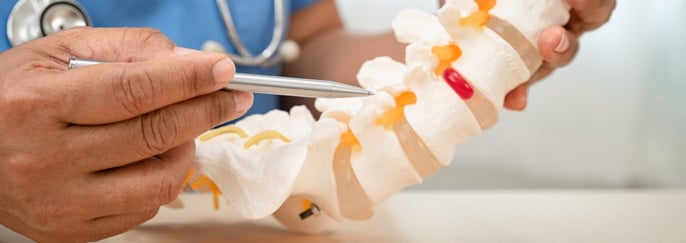Sciatica affects millions of people worldwide, causing pain that travels from the lower back down one leg. Understanding this condition can help you recognize symptoms and know when to seek treatment.

What is Sciatica?
Sciatica is a common condition characterized by pain, tingling, or numbness that travels down the sciatic nerve and its branches. The sciatic nerve starts in the buttocks, and runs down the back of the thigh, with subsequent branches that go into the calf and foot. This discomfort is typically felt on one side of the body and can extend as far as the foot.
When symptoms occur in both legs, it’s usually not classified as sciatica, as the underlying causes may differ. The pain is often described as “referred pain” because the issue isn’t in the leg itself—it’s usually due to an irritation or a compression of the nerve root in the lower back.
The most common cause is a prolapsed intervertebral disc (PID, also called a herniated disc), though other conditions like bone spurs or tumors can also produce similar symptoms. Sciatica affects up to 40% of the global population, with higher rates in developed countries due to sedentary lifestyles, obesity, and aging populations.
Causes & Risk Factors
The causes of sciatica can be broadly categorized into degenerative changes (wear and tear) or trauma (injury). Not infrequently, both factors play a role. For example, a high-impact injury, like a fall or car accident, can rupture a disc. On the other hand, a weakened disc may rupture from minor stress, such as lifting a heavy object or even coughing or sneezing.
Common risk factors include:
- sedentary lifestyle
- smoking
- poor posture
- obesity
- repetitive heavy lifting or twisting motions
- age-related changes
- genetics (though these are unmodifiable and still being studied)

Symptoms
The hallmark symptom of sciatica is pain that radiates from the lower back or buttock down one leg, often along the back or outer side of the leg. Other symptoms include:
- tingling or numbness in the leg or foot
- pain aggravated by certain movements, sneezing, or coughing
- sharp, burning or shooting pain
Seek immediate medical attention if you experience alarming symptoms include:
- muscle weakness in the leg, ankle, or toes
- loss of bladder or bowel control
- numbness in the genital area
These symptoms could indicate cauda equina syndrome (a condition where nerve roots at the base of the spine are severely compressed), a medical emergency requiring urgent treatment.
Diagnosis
Diagnosing sciatica involves careful history taking and thorough physical examination, including checking for muscle strength, sensory changes and reflexes in the leg.
Imaging, particularly an MRI scan of the lumbar spine, is commonly used to pinpoint the cause and location of nerve compression. Your doctor may also recommend other tests based on your specific symptoms and medical history. 

Treatment Options
The good news is that most cases of sciatica improve on their own within weeks. Treatment options include:
- Medications: such as pain relievers, anti-inflammatory drugs, neuropathic pain medications and sometimes muscle relaxants.
- Physiotherapy: including stretches, massage, and traction to help relieve muscle tension
For severe, unrelenting pain, epidural injections* may be recommended.
Surgical Treatment
Surgery is typically recommended if the patient experiences persistent pain or worsening nerve function, particularly loss of muscle strength. Common surgical options include discectomy, which involves removing the herniated portion of the disc to relieve nerve compression and alleviate symptoms.
With advancements in medical technology, modern minimally invasive techniques have significantly improved the safety and effectiveness of surgeries while shortening recovery time. Below are several common minimally invasive surgical options:
- Artificial Disc Replacement: Replaces the damaged disc with an artificial one to restore spinal stability and mobility.
- Microscopic Discectomy: Utilizes microscopic technology to precisely remove disc tissue that is compressing the nerves, minimizing damage to surrounding tissues.
- Oblique Lumbar Interbody Fusion (OLIF): Performed through a lateral approach, this technique reduces disruption to the posterior spinal muscles and ligaments, facilitating a quicker recovery.
These minimally invasive techniques not only effectively relieve symptoms but also offer patients shorter hospital stays and reduced postoperative discomfort. However, the decision to undergo surgery and the choice of surgical method should be carefully evaluated and recommended by a specialist based on each patient’s individual condition.
Prevention
Preventing sciatica involves:
- maintaining good posture
- taking regular breaks from prolonged sitting
- using proper lifting techniques
- engaging in regular back and core strengthening exercises
- staying active and maintaining a healthy weight
- avoiding smoking

When to See a Doctor
Contact your healthcare provider if:
- Pain persists for more than a few days
- Pain is severe and interferes with daily activities
- You experience any warning signs mentioned above
- Conservative treatments aren't providing relief after several weeks
Remember, early intervention can often prevent symptoms from worsening and help you return to normal activities sooner.
*An injection therapy that delivers medication near the spinal area to reduce pressure on nerves.